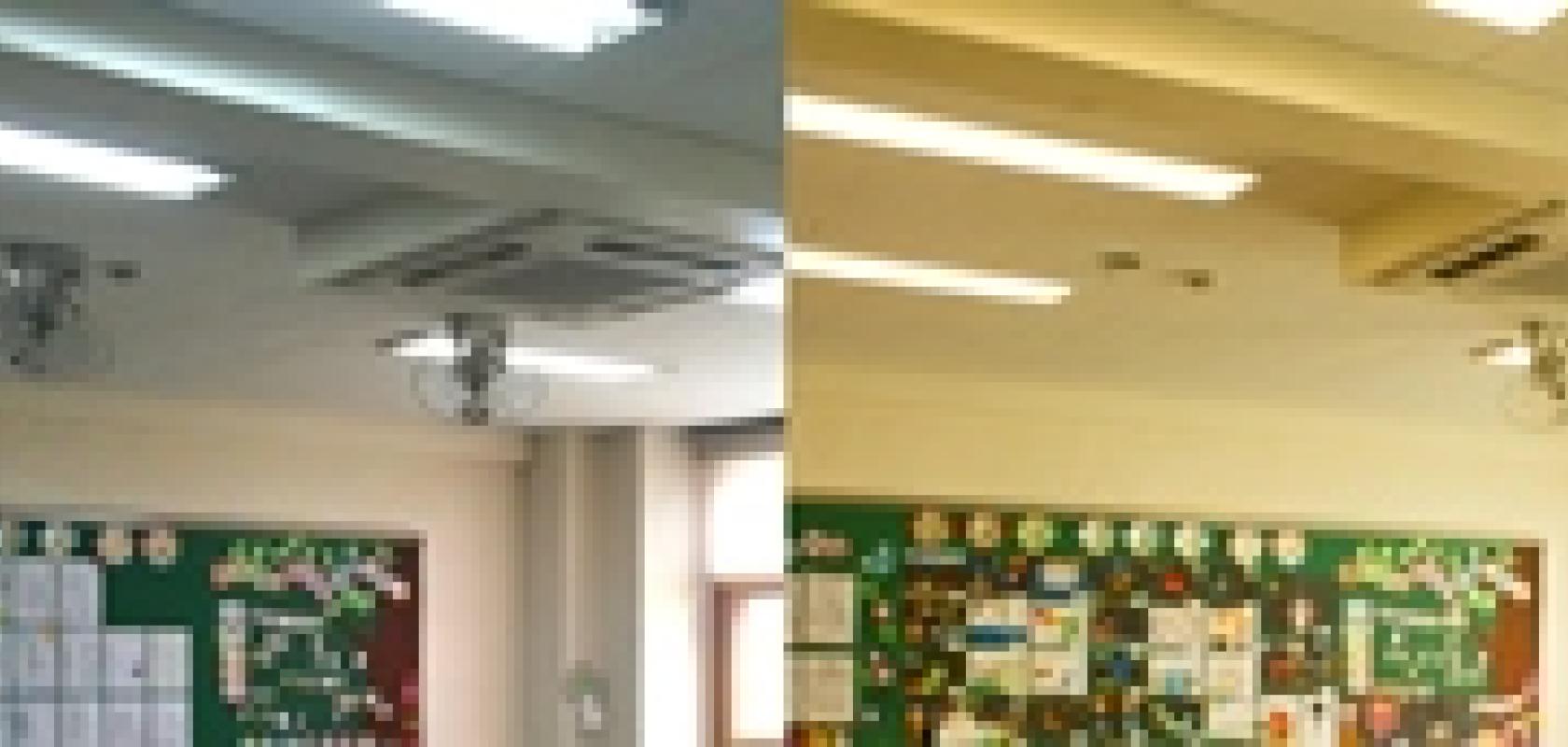A new study published in Optics Express has shown that light of different colour temperatures can affect physiological alertness and cognitive performance in school children.
The study was conducted by Kyungah Choi and Hyeon-Jeong Suk, associate professor of industrial design at the Korea Advanced Institute of Science and Technology (KAIST) in South Korea and head of the Institute’s ‘colour laboratory.’
The intensity of artificial lighting has been shown to have a range of effects on our mood and our ability to concentrate. In their study, Choi and Suk looked specifically at the effects of different correlated colour temperatures, or CCTs.
The CCT is a simple way to characterise the colour appearance of a light source. A low CCT – below 3500 Kelvin (K) – provides light that appears ‘warm’ (yellowish white), while a high CCT– more than 5000K – provides light that appears ‘cool’ (bluish white).
In a preliminary study with adult volunteers in a laboratory setting, Suk and Choi examined the effect of different CCT lighting conditions (3500, 5000 and 6500K) on the level of physiological alertness, measured using electrodes placed on the skin of the wrists and ankles for recording of electrocardiogram (ECG), which is known to exhibit different characters depending on the alerted state of a subject. The study was conducted in a room equipped with an LED luminous ceiling, with the CCTs of the ambient lighting controlled by adjusting the red, green, blue, and white levels of the light. As predicted, the 6500K lighting condition led to the highest level of physiological alertness while the 3500K condition was the most ‘relaxing.’
Next, the researchers tested the effect of the three different lighting conditions on the academic performance and recess activities of fourth-grade children in real life classrooms. To test academic performance, students were given timed arithmetic tests.
Two classrooms were studied – one equipped with LED lights that can be tuned to CCT of 3500K, 5000K, and 6500K and the other with standard fluorescent lights, as a control. Here, as expected, the students scored best on academic tests when they worked under the 6500K lighting condition and performed best on recess activities under 3500K lighting.
The research result shows that the 6500 K condition led to stimulation of higher alertness states – and the greatest enhancement of academic performance – follows the predictions of the so-called Yerkes-Dodson Law. Developed more than a century ago by psychologists Robert Yerkes and John Dodson, the law postulates that there is a curvilinear relationship between mental arousal (or stress) and performance. That is, people tend to perform best at certain intermediate levels of mental arousal (in this case, under the 6500K lighting condition) and worse when these levels are either too low or too high.
The research implies that there is a limit to how intense classroom lighting can be before academic performance would stop improving, and eventually decline.
The researchers also tested children of the same age group in a ‘mock’ classroom set up in the lab. However, they found no significant variation in performance under the various conditions. This suggests that the duration of exposure to the intense lighting condition could also affect performance.
‘A plausible explanation for the lack of meaningful in-lab results is that the test subjects were placed in an artificial setting and exposed to the lightings for only a short time,’ Suk said. ‘Future work could be done to investigate the ideal exposure time for each lighting condition.’
Choi is now developing an integrated visual system that can adaptively tune the CCT of visual-display terminals, such as electronic books and smart boards, in correlation with that of lighting to optimise the effects on learning and performance.
‘We believe that small changes in classroom environment, such as lighting conditions, could make a dramatic difference in supporting students’ learning,’ Suk said.
Further information


